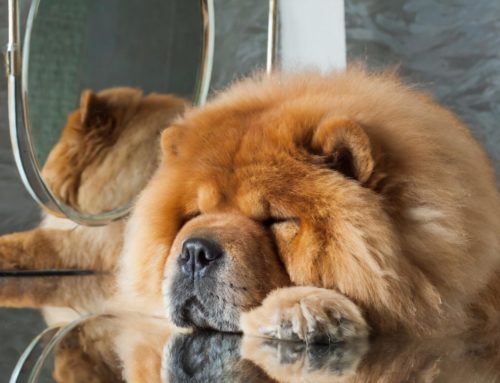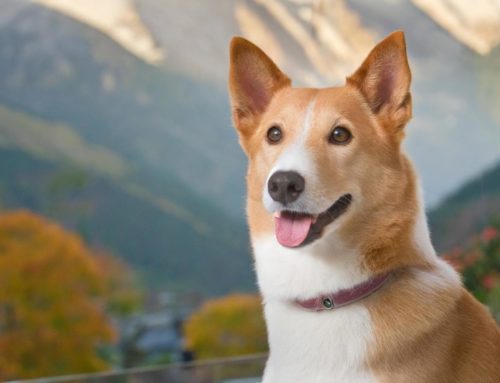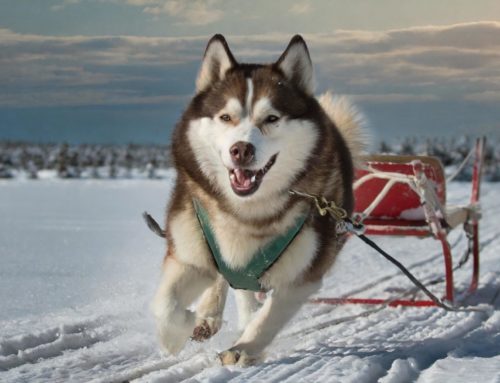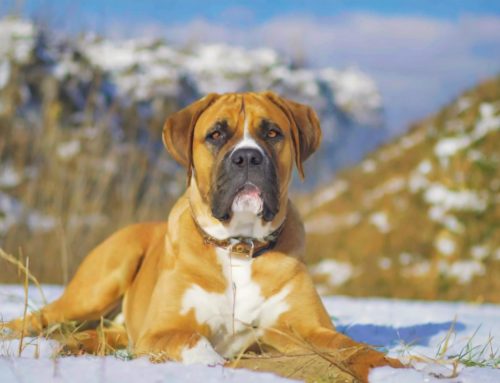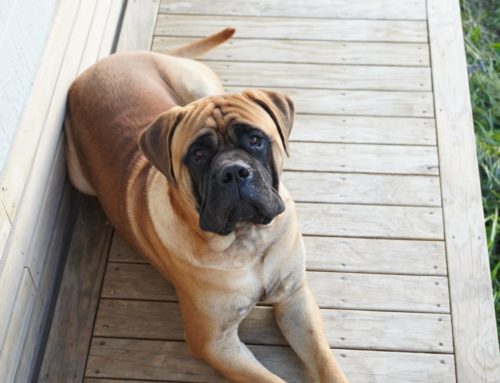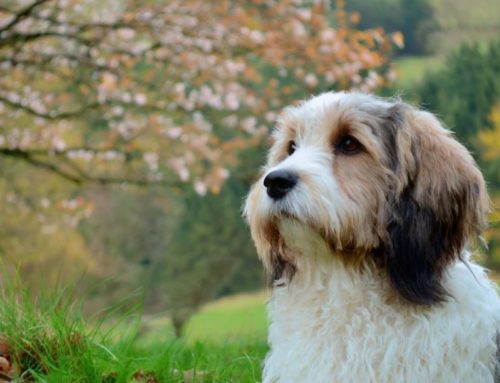
The Catalan Shepherd, officially known as the Gos d’Atura Català, is a medium-sized dog breed with a rich history. Originating from the Catalan Pyrenees, this breed has been used for herding and guarding herds for thousands of years.
The Catalan shepherd, with its long-haired coat and distinctive, high-set ears, is a direct descendant of ancient Pyrenean mountain dogs. These dogs are known for their ability to work independently, which makes them very suitable as herding dogs.
Their coat is long and smooth, offering protection from the harsh weather conditions of the mountains. The Catalan shepherd’s tail is a distinctive feature and contributes to their graceful appearance. With a shoulder height of around 53 to 55 centimetres, the Catalan shepherd is an energetic and versatile dog.
They need plenty of exercise and are very suitable for various dog sports such as knitting. These dogs are not only excellent shepherds, but also loyal and protective family dogs.
FCI breed group 1 Sheepdogs and Cattledogs
A member of the FCI Breed Group 1, the group of herding dogs and drovers, the Gos d’Atura Català is known for its herding instinct and ability to work independently. They are intelligent and obedient, which makes them suitable for various dog sports such as agility, flyball and obedience.
This herding dog comes from an environment where it had to cooperate with its human companions, which makes it an excellent companion dog. However, because of its working dog heritage, the Catalan Shepherd loves to be busy and requires plenty of exercise and mental stimulation.
This breed is also known to be a good watchdog, loyal to its family and cautious with strangers. It is crucial to socialise and train this dog at an early age, especially if it lives with other pets such as cats or other dogs.
Coat and appearance of this dog breed with hubertus claw
Originating from Catalonia, the Catalan Shepherd Dog is known for its unique and attractive appearance. This medium-sized working dog, also known as the Gos d’Atura Català, has a distinctive coat that is essential for its recognisability.
The catalan shepherd’s coat is long, thick and can vary in texture, from smooth to slightly wavy. Regular brushing is necessary to keep the coat free of tangles and dead hairs, including control of the hubertus claw These dogs are powerfully built and their size is between 45 and 55 cm at the withers, weighing between 15 and 25 kg.
Their tail is characteristic and is often carried low. With their high-set ears and a shoulder height of around 53 cm, they are active and agile dogs that like to be busy The Catalan Shepherd is an energetic and brave dog, known for its ability to herd and guard.
This makes it not only an excellent working dog, but also a great family dog that gets along well with children and other pets. However, due to their energetic nature, they need plenty of exercise and mental stimulation.
Health problems with this sheepdog
A robust and resilient breed, the Catalan Shepherd Dog is generally healthy, but like other breeds, they can be prone to certain hereditary diseases and conditions.
Below is a list of some of the health problems that can occur in this breed:
- Hip dysplasia: A common condition in medium to large breeds, in which the hip joint develops abnormally, which can cause pain and arthritis.
- Elbow dysplasia: Similar to hip dysplasia, but in the elbow joint.
- Patella luxation: This is a condition in which the kneecap shifts out of its normal position.
- Progressive Retinal Atrophy (PRA): An eye condition that can eventually lead to blindness.
- Cataract: Clouding of the lens of the eye, which can affect vision.
- Allergies: Some Catalan Shepherd Dogs can suffer from skin allergies, which cause itching and discomfort.
- Epilepsy: A neurological disorder that leads to seizures.
- Hypothyroidism: A condition in which the thyroid gland produces insufficient hormones.
The character of the Catalan shepherd dog
Originating from the Pyrenean mountain dogs and developed thousands of years ago, this breed is very energetic and needs plenty of exercise. Their energy and intelligence make them suitable for various dog sports, such as doggy dance and knitting.
The Catalan shepherd is generally a friendly and loyal family dog, good with children and can also be an excellent watchdog, although they can sometimes be reserved toward strangers.
The Catalan shepherd’s ears are set high and give them an alert look. These dogs enjoy being busy and love to be trained. They are suitable for a variety of tasks, from herding to search and rescue.
This breed, was developed for herding and guarding sheep, which has resulted in a dog with a strong work ethic and great adaptability to different situations. These sheepdogs are very attached to their families and can be excellent guard dogs, always alert and cautious of strangers.
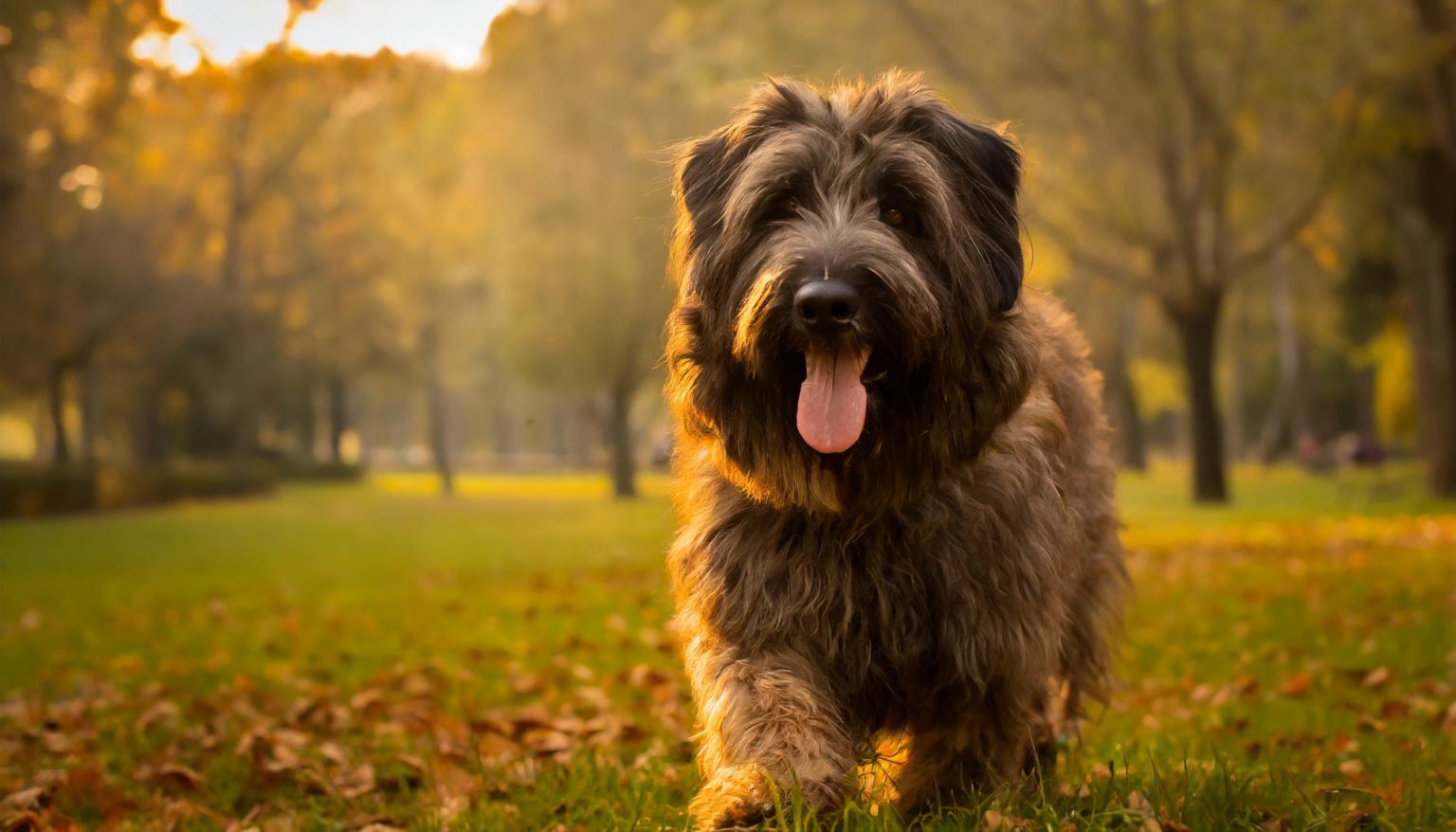
The Care of the Catalan Shepherd
Known for its long, thick coat and energetic nature, the Catalan Shepherd requires specific care to stay healthy and happy. First of all, coat care is essential. These long-haired dogs need regular brushing to prevent tangles and the accumulation of dead hairs. During shedding periods, it may be necessary to brush the coat more often.
As for exercise, the Catalan Shepherd has a lot of energy and requires sufficient daily physical activity. Long walks, running and playing are excellent ways to meet their exercise needs. These activities not only keep their bodies in shape, but also provide mental stimulation.
In terms of nutrition, it is important to provide a balanced diet that suits their age, size and activity level. Regular veterinary check-ups are also essential to monitor their health and intervene in time in case of any health problems.
Furthermore, it is important to pay attention to basic grooming such as nail clipping, ear cleaning and dental care. These grooming routines contribute to the dog’s overall well-being.
Socialisation and upbringing of the Catalan shepherd
Socialisation and upbringing of the Catalan Shepherd are crucial for developing a balanced and well-adjusted dog. This energetic and intelligent breed needs a consistent and patient training approach, complemented by early and continuous socialisation.
Socialisation should begin in puppyhood, where the Catalan Shepherd is exposed to different people, animals, environments and sounds. This helps to develop a confident dog that responds well to different situations. It is especially important because this breed can sometimes be reserved towards strangers.
As for training, Catalan Shepherds respond well to positive reinforcement techniques, such as praise and treats.
These dogs are intelligent and learn quickly, but they can also have an independent streak, which requires consistency and patience from the trainer. Basic obedience training, including commands such as sit, stay and come, lays a solid foundation for future training.
Catalan Shepherds also need mental stimulation. Training games, agility exercises and puzzles can keep their minds active and engaged.
How much experience does a Catalan Shepherd require
The Catalan Shepherd is an intelligent and energetic breed best suited to dog owners who have some experience with dog training and behaviour. This breed can be challenging for inexperienced owners because of their strong will, energy level and need for consistent training and socialisation.
Experienced dog owners will likely be better able to handle the training and behaviour management of the Catalan Shepherd. They can better interpret the dog’s subtle signals and respond effectively to their needs. They will also be able to provide the dog with the necessary structure and guidance, which is crucial for this breed.
That said, this does not mean that inexperienced owners cannot raise a Catalan Shepherd. With dedication, research and possibly help from professional trainers, they too can be successful. It is essential for new owners to be aware of the breed’s requirements and be willing to invest time and effort in training and socialisation.
Is training necessary with this police dog
Training your Catalan Shepherd is very important, given their intelligence and energy. These dogs love to be busy and require regular mental and physical stimulation. They tend to learn quickly and respond well to positive training methods. Their high energy level means they need plenty of exercise, which should also be part of their daily routine.
During World Wars I and II, the Catalan Shepherd was used as a police dog, complementing its natural aptitude for guarding and herding with its ability to serve in security and police duties. Its high-set ears and athletic build made it suitable for these tasks, while its obedience and alertness distinguished it as a valuable ally for the police.
Breeders of the Catalan Shepherd often stress the importance of starting training and socialisation early, especially as these dogs can become strongly attached to their families and are sometimes reserved towards strangers. Regular training also helps control their natural herding and guarding instincts.
These dogs are suitable for various dog sports such as knitting, which contributes to their physical and mental well-being. Overall, a well-trained Catalan Shepherd is an excellent and loyal family dog, getting along well with children and other pets.
How much exercise does a Catalan Shepherd need?
The Catalan Shepherd, a medium-sized and energetic dog native to the region of Catalonia, needs a significant amount of exercise daily. This breed, known as the Gos d’Atura Català, has a rich history as a mountain dog and herding dog, used for guarding and herding flocks in the Spanish Pyrenees.
Because of their background as working dogs, the Catalan Shepherd requires plenty of physical activity to expend their energy. They thrive on tasks that challenge both their bodies and minds. Daily long walks, running, and playtime are essential to meet their exercise needs. Dog sports such as agility or flyball can also contribute to their well-being.
Although these dogs are suitable as guard dogs, they are naturally social animals that do not like to be left alone for long periods of time. Regular interaction with their owner and involvement in family activities are important for their mental health.
It is important to remember that although the Catalan Shepherd is a robust and healthy dog, regular exercise is essential to prevent health problems such as obesity.

How is this family dog’s interaction with children
Known for its loyal and protective nature, the Catalan Shepherd can be an excellent companion for children. A medium-sized dog with an energetic and playful disposition, they are often good at participating in games and activities with younger family members.
Their background as shepherd dogs, originating from the region of Catalonia, has imbued them with a natural sense of responsibility and protection, which makes them considerate and caring when dealing with children. Catalan Shepherds are known for their patience and tolerance, which is crucial in interactions with children.
They are generally friendly and gentle, but as with all dogs, supervision during interactions with children is recommended to ensure the safety of both the dog and the child. It is also important that children learn how to treat the dog respectfully and gently.
Early socialisation and training of the Catalan Shepherd, especially around children, are essential for promoting positive interactions. These dogs are intelligent and respond well to training, which helps reinforce desired behaviour.
Benefits of a Catalan sheepdog
- Intelligence and Trainability: Catalan Shepherds are intelligent and easy to train. They excel at obedience and learn new commands quickly.
- Protective and Loyal: These dogs are naturally protective and show strong loyalty to their families. They can be excellent guard dogs.
- Energetic and Active: Catalan Shepherds have a lot of energy and are great for active families. They enjoy physical activities and outdoor games.
Disadvantages of a Catalan sheepdog
- Energy requirement: Due to their high energy level, they need sufficient daily exercise. Insufficient exercise can lead to behavioural problems.
- Vigilance: Although protective instinct can be an advantage, excessive vigilance can lead to excessive barking or suspicion towards strangers.
- Coat care: Catalan Shepherds have a medium- to long-haired coat that requires regular grooming to prevent tangles.
Life expectancy
The life expectancy of the Catalan Shepherd is usually between 12 and 14 years. As with many dog breeds, life expectancy can vary and is influenced by factors such as genetics, health care, nutrition and lifestyle.
With proper care and attention, Catalan Shepherds can live a long and healthy life.
Price of a Catalan Sheepdog from breeders and adoption
The Catalan Sheepdog, or Gos d’Atura Catala, is quite a rare find in the US, leading to a premium cost over more prevalent dog breeds. Here’s a brief overview of what to expect financially:
Price Range: A Catalan Sheepdog puppy might cost between $2,000 and $5,000 in the US.
Factors Influencing Price: The price can vary based on several criteria:
- Breeder’s Reputation: Expect to pay a premium for puppies from well-respected breeders known for champion bloodlines.
- Pedigree: Purebred Catalan Sheepdogs with official registration documents tend to fetch a higher price than those without.
- Geographical Location: Prices may be higher in regions with an elevated cost of living.
- Age: Generally, adult dogs come at a lower cost compared to puppies.
- Competition Quality: Dogs intended for show or competition are usually priced higher.
How to Find a Catalan Sheepdog:
- Breeders: Reputable breeders focusing on this rare breed might have waiting lists due to the infrequent litters.
- Rescue Organizations: Though less common, breed-specific rescues or shelters welcoming all breeds may sometimes have a Catalan Sheepdog up for adoption.
Other Considerations:
- Similar Breeds: If you’re flexible, other breeds like the Belgian Shepherd or the Pyrenean Shepherd could be alternatives. These may be more available and potentially less costly.
- Research is Key: Make sure the Catalan Sheepdog suits your lifestyle before making a commitment.
- Visit the Breeder: Seeing where the puppies come from and meeting their parents can give you insights into their health and behavior.
